We Went To The Amazon Singapore Warehouse — And It’s Not What We’d Expected
What happens from the moment an item arrives at the Amazon Fulfillment Centre in this ulu part of Singapore, to the moment it gets shipped to customers.
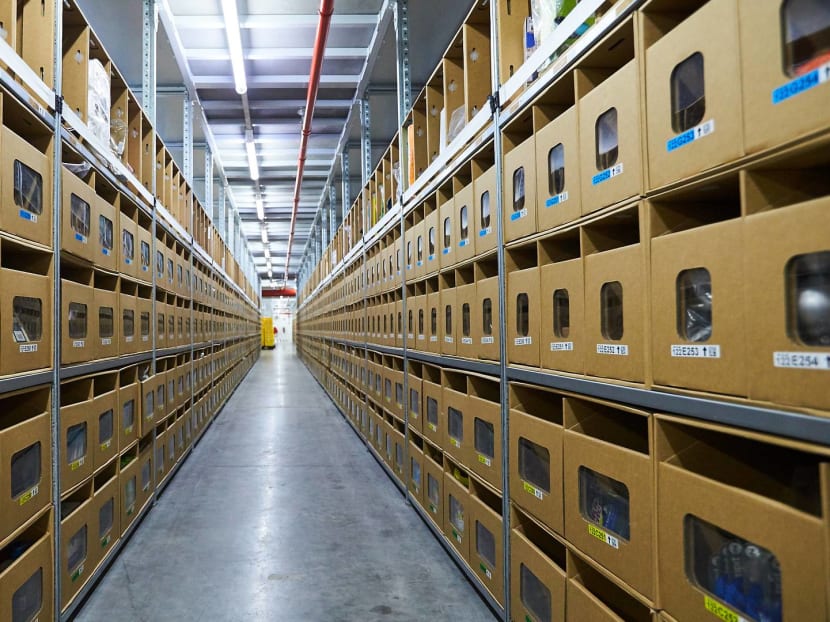
What happens from the moment an item arrives at the Amazon Fulfillment Centre in this ulu part of Singapore, to the moment it gets shipped to customers.
The first thing that strikes us when we stroll through the grey turnstiles at the Amazon Fulfillment Centre is not how neat it is (it is very, as one would expect), but how… tranquil it seems. Who knew that the home of Amazon.sg (just launched here in October), a cavernous, labyrinthine 170,000 sq ft space in an industrial area in far-flung Toh Guan, would be such a picture of calm? It is also unusually quiet, despite this being a hub where hundreds of employees handle hundreds of thousands of products. Everything seems to be running like clockwork, it’s all under control, and there’s a sort of orderliness that would certainly please any control freak.
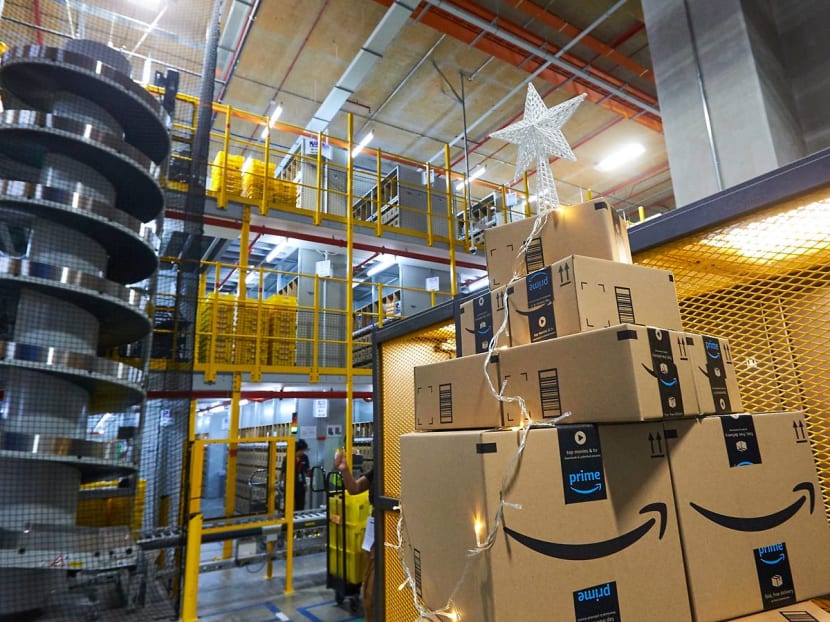
Just think about: it takes at least seven people at this fulfillment centre to get your order together and sent to you, even if you only order one item that’s perhaps as small as a USB cable. Your shopping loot doesn’t appear at your doorstep by magic, you know. Imagine what happens when there’s a rush of hundreds or thousands of orders, like over this Black Friday and Cyber Monday weekend.
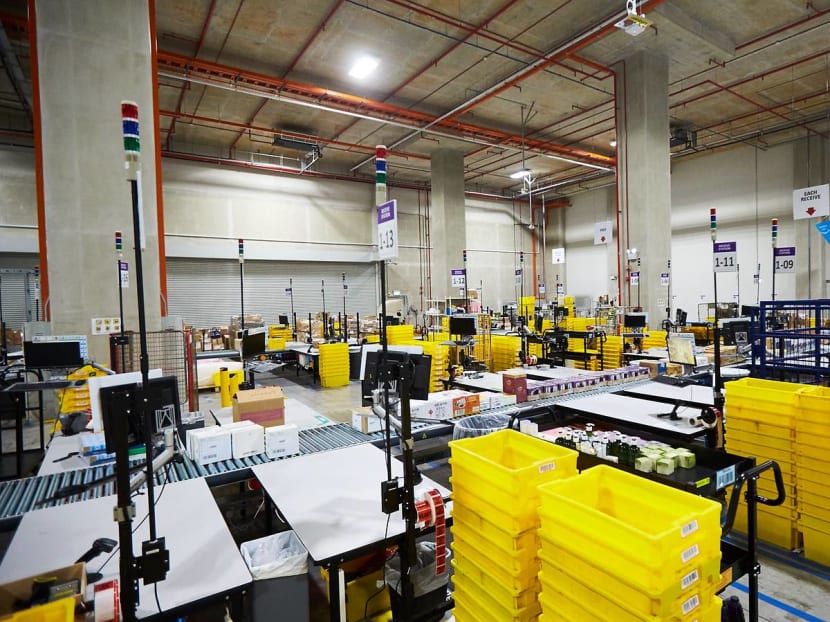
Which is why we’re here to suss out the behind-the-scenes action before the biggest shopping weekend of the year, and Amazon Singapore’s country manager Henry Low is taking us on a guided tour. What does it take to get this massive system to work, from the moment a product enters the warehouse, to the moment it leaves and makes its way to the customer? Scroll on to find out.
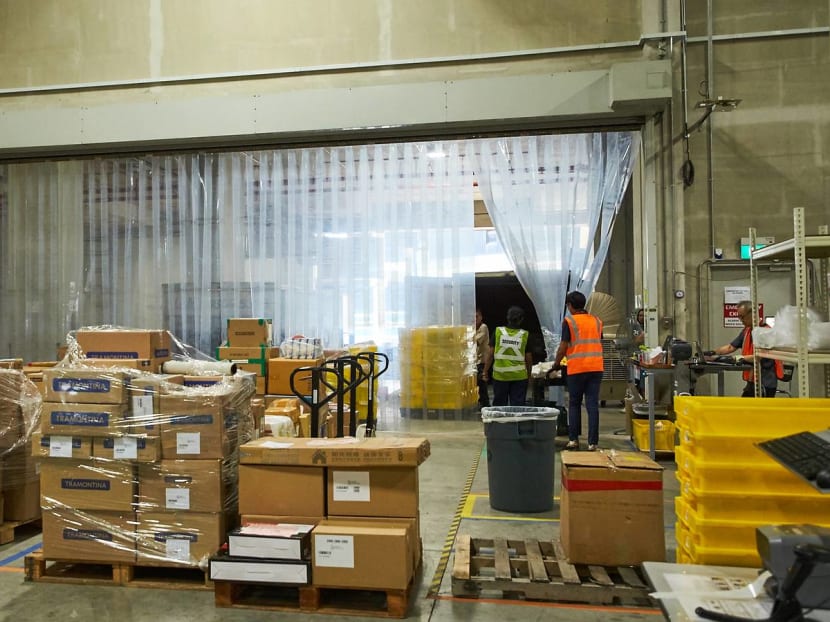
“We have hundreds of sellers and vendors that will deliver their products to us, both locally and internationally,” says Henry.
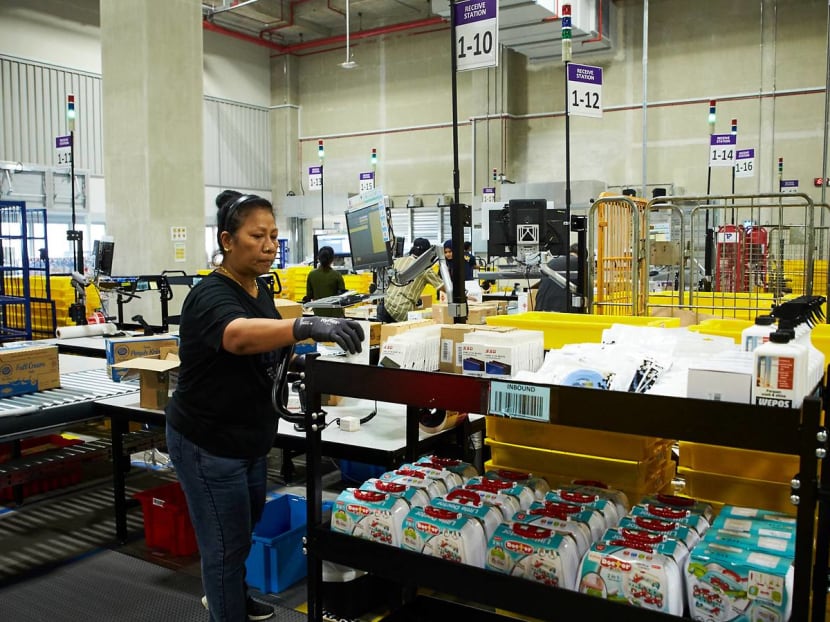
“We first scan the products in and enter data like how many units there are. Most importantly, we do a six-sided check. We make sure the product is visually okay and check all sides, like the six sides of a cube, and ensure there are no dents. There are two bins under the workstation here, one that’s damaged and another one for the Cubiscan container. The latter is for products that we need more information about, like its dimensions, which we’ll get to. Right now, after scanning the product, if there is enough information about the product, the associate will scan it in and put it onto a cart. This allows us to directly track all of the products, and we know where each and every unit is. It’s also at this point in time that the product is available for purchase, and it will pop up on the website in real time and people can see it’s available to buy.”
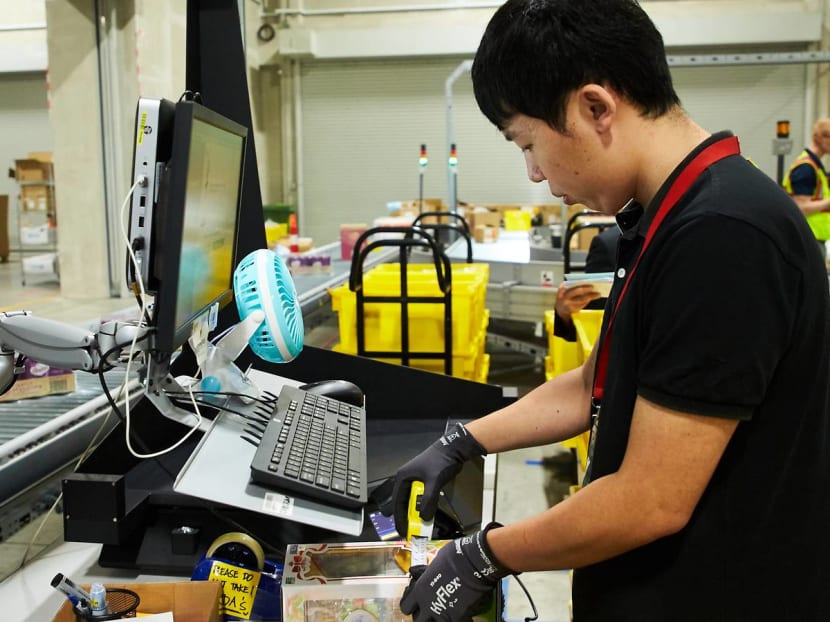
“It’s very important we get the accurate measurements of the height, length, width and weight as it determines where we can store it, what box we pack it in to ship it out, and even the final verification check when the item is on the way out to the customer.”
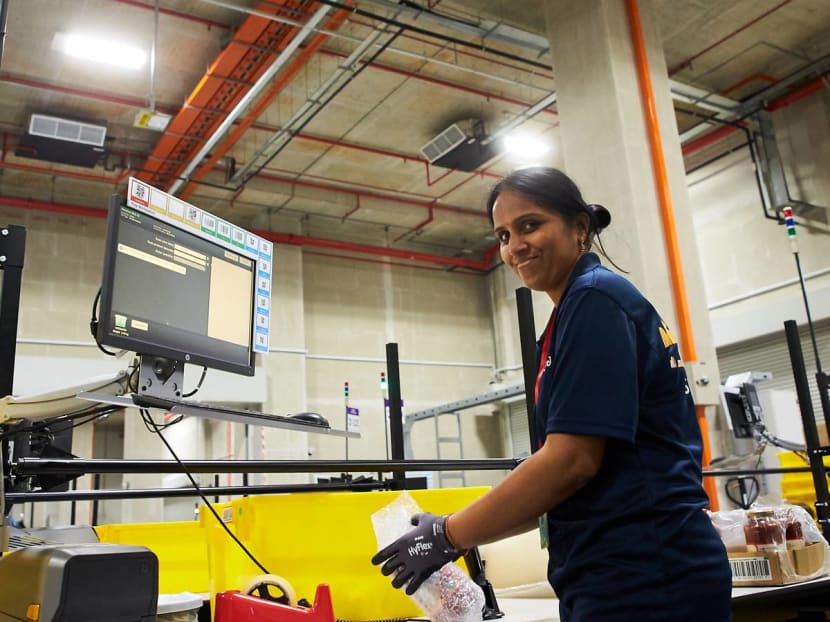
“For more fragile products, like glass items or wines or spirits, if they don’t come in packaged protection, we wrap it in bubble wrap. This is a value-add service to sellers. This is to make sure the product survives onward shipping.”

“Each bin looks like it has a random mix of items, unlike at a supermarket where similar products are placed together. There could be a USB cable, a toy and a soup mug in the same bin. The stower will find wherever there’s space, scan the item and location, and place the item, for example, a soup mug, in there. This way, she doesn’t have to go to where other soup mugs are placed. If we run a sale on soup mugs, rather than every picker coming by to the same location to pick up soup mugs and cause a congestion of pickers, we have the pickers spread out. The product sits here till someone orders it.”
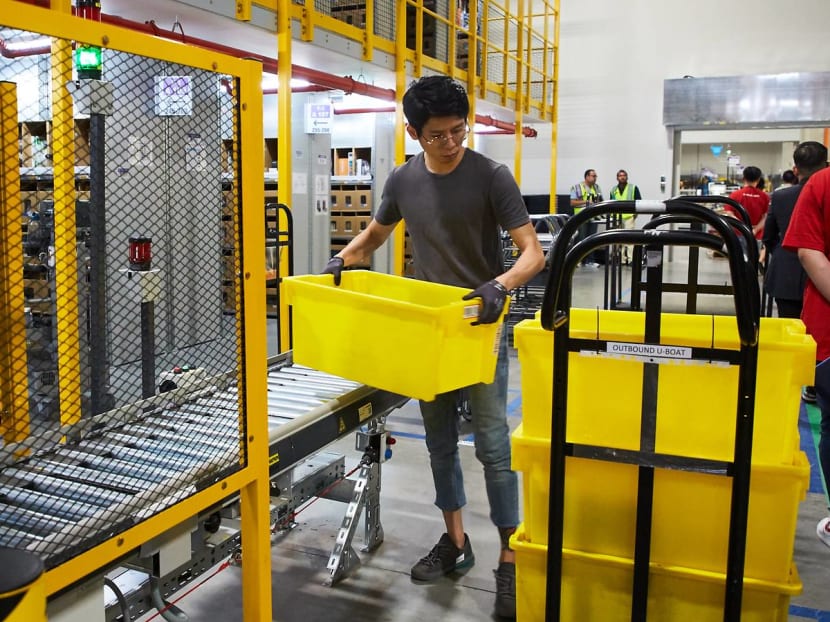
“He or she will scan the bin [that they pick it from], do a six-sided check, take it, scan the product and put it into a yellow container. They will also scan the yellow container, and at this moment, the drop in stock availability will be reflected on the website in real time.”
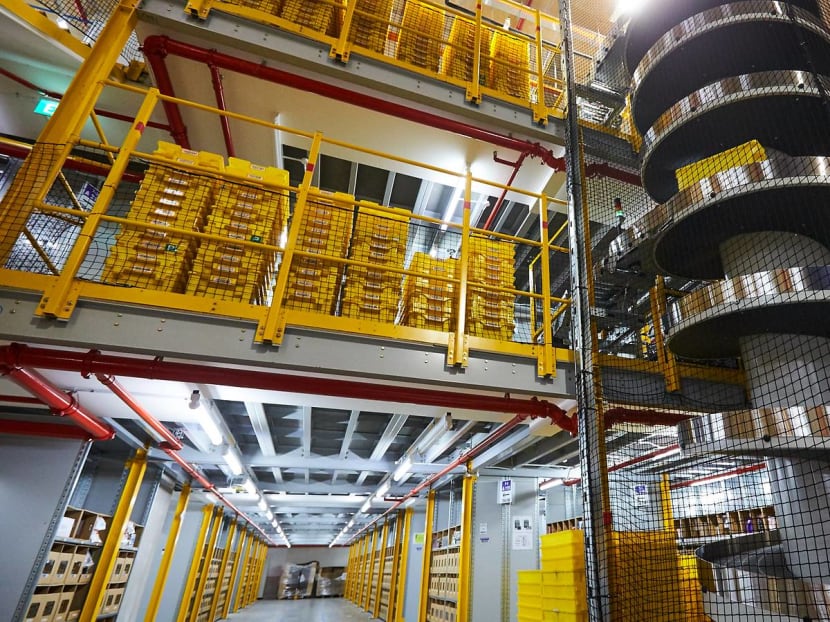
“These containers get dropped off at the spiral conveyor, and are sent downstairs automatically, rather than have the pickers themselves change floors.”
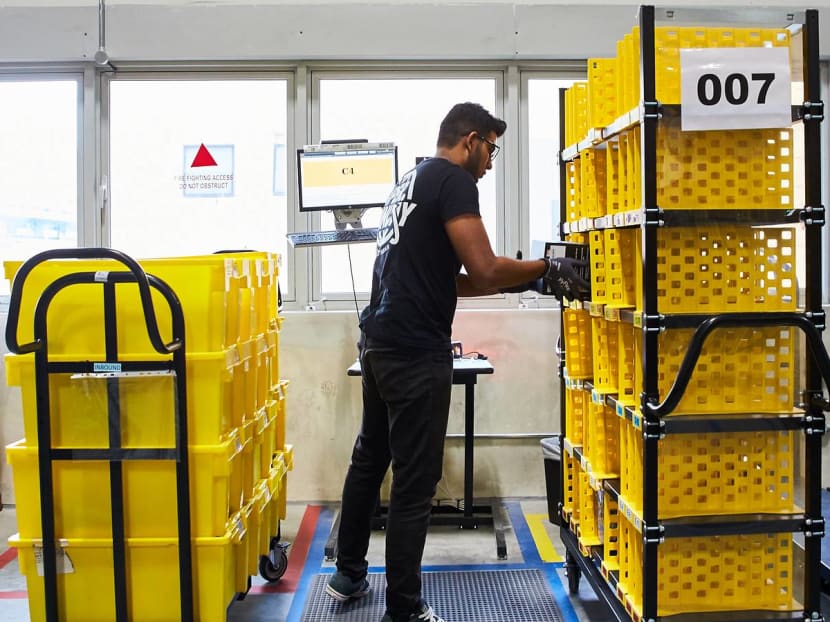
“Let’s say a customer orders a toy, a USB cable and detergent. They’ll all come from different places in the fulfillment centre and end up in three different yellow containers. Over here is where we merge the order so that the customer receives it in one package, rather than three separate packages. That shelf on the right with yellow dividers? Each one represents one customer order. The associate scans product and the system tells them to put it into respective box, eg. D6 or A4.”
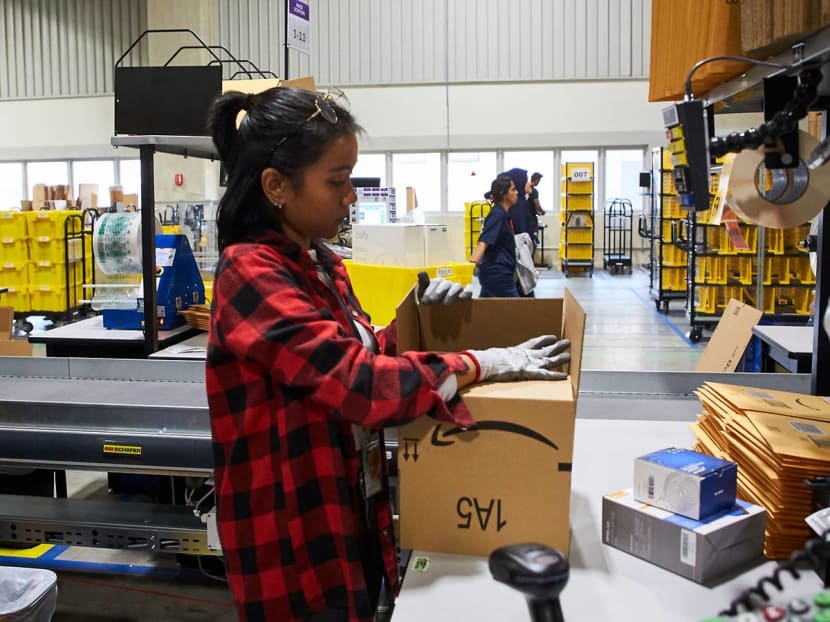
“The system will give recommendations on which box is best to use for which order. Rather than have someone estimate which box to use, the system takes the guesswork out of it using info from the Cubiscan process.”
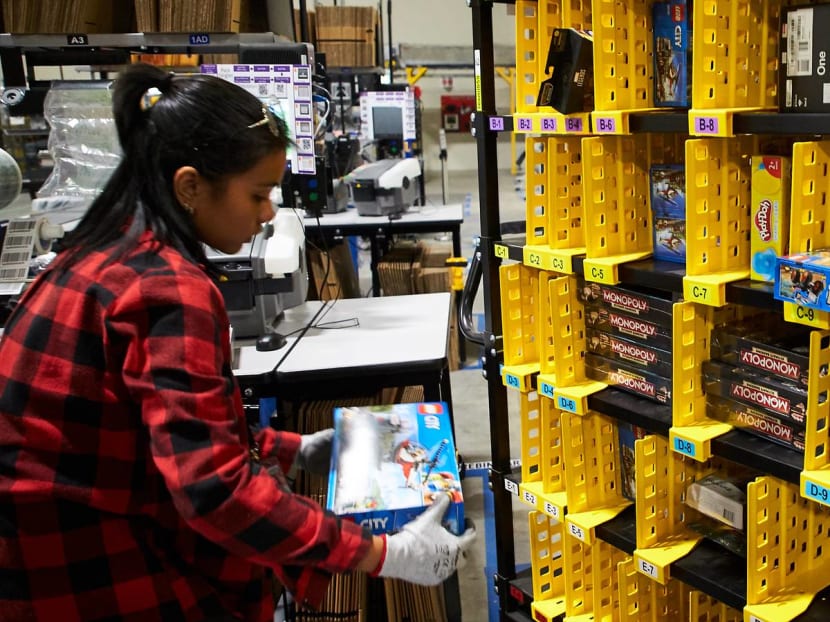
“The system arranges the products in a Tetris form and indicates which box to use. The associate will take the box, build the box, do a six-sided check again, and if the items are okay, she’ll put them in the box.”
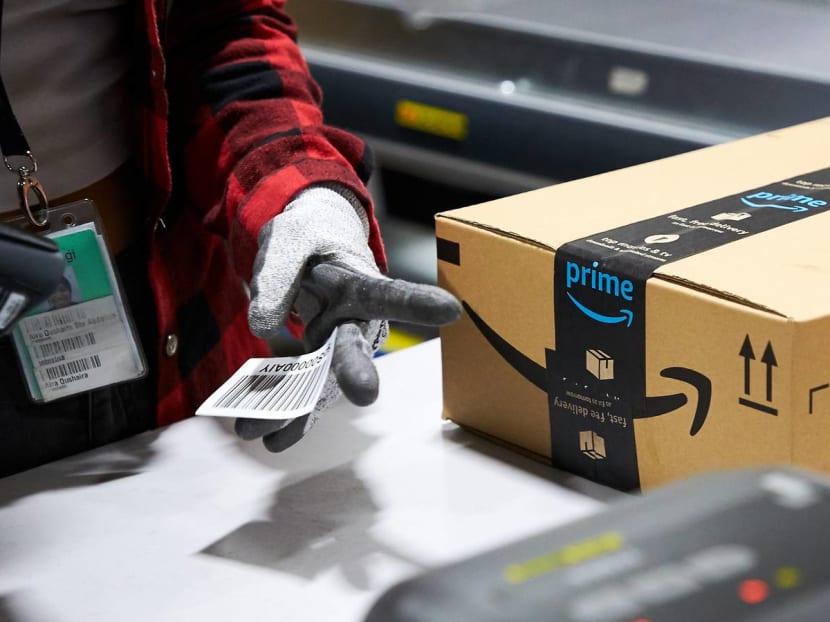
“At this point, the associate will print a label with the order ID and scan it into the system. Up until this point, all customer names and addresses are kept in the system and assigned to an order ID, and are not printed anywhere in the process. This is to ensure customer confidentiality. And at this point, there still is no customer information printed yet, only a bar code.”
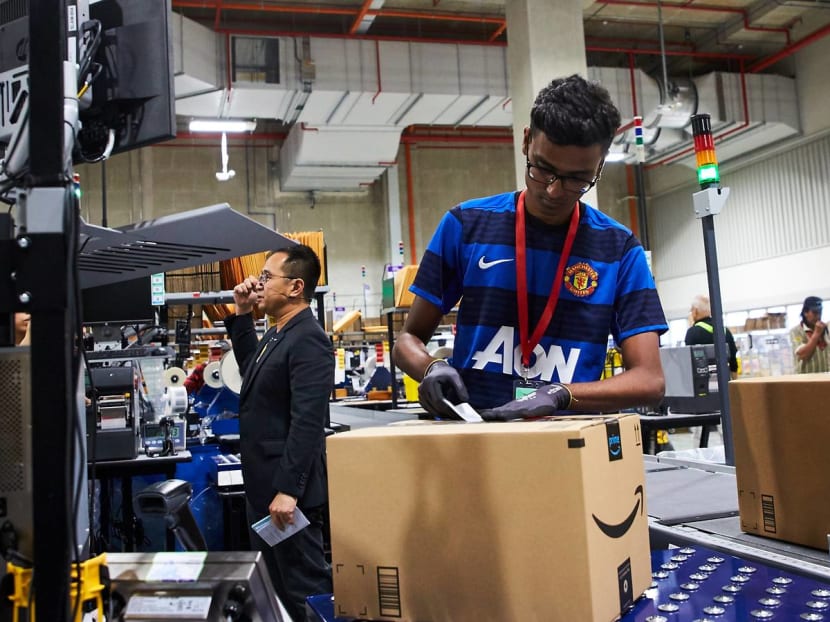
“This is the last stop before the order gets on to the delivery truck. The associate here will weigh the entire package. If the total weight of the items do not tally or if there’s an error, he’ll stop and check. Otherwise, he will generate the customer’s name and shipping information, and put it on the conveyor belt and send it off [on the delivery truck], where we track it all the way till it reaches the customer.”
More info about Amazon’s Black Friday Cyber Monday deals at https://www.amazon.sg/blackfriday or on the Amazon Shopping App.
Photos: Alvin Teo






